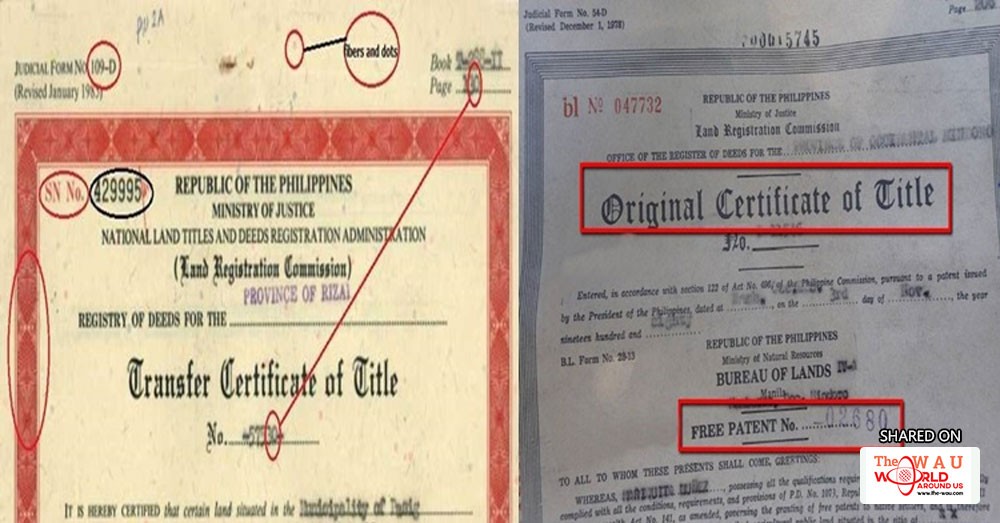Learn how to determine fake Philippine land titles in just 30 seconds with these following steps to fight real estate scammers and con men.
Nowadays, the numbers of scam victims fall for fake land titles continue to increase despite the government’s effort to fight scammers and con men in the Philippine real estate industry.
Most of the victims lost their money after buying properties with fake land titles implicated by scammers and a land scam syndicate.

Having a proper knowledge in checking the characteristics of a land title could be your first line of defense to learn if you’re dealing with scammers.
Recently, a Facebook user named Alfred Ang has shared a lengthy post on how to check and spot fake land titles from the original ones, which was given by Ms. Ruby Valdez, one of the land registration examiners from the Land Registration Authority of the Philippines.


The post also noted that the authentic land titles in the Philippines were made of a unique paper supplied by the Bangko Sentral ng Pilipinas (BSP) which is different from other types of papers.
Here are some of the physical qualities of an original land title:
- Texture Similar To Bank Check
- Contains Faint Watermark of “LRA”
- Old Land Title Paper has Light Yellow Color
- The Color of e-Titles Should Be Pale Straw
- Contains Noticeable Fibers and Dots
- The Fibers Should Shine Slightly When Exposed To UV Light
The content should have these following indications:
- If it’s an Original Certificate of Title (OCT), it should indicate “Judicial Form No. 108-D” at the top.
- If it’s a Transfer Certificate of Title (TCT), it should indicate “Judicial Form No. 109-D“
- The serial number label (SN No.) should be in red color, while the digits should be in black for the owner’s duplicate.
- The last two digits of the page number in the upper right-hand side should correspond to the last two digits of the TCT number.
- The red/blue border should be slightly embossed and not flatly printed.
- For e-Titles, all entries should be computer encoded and printed, unlike the old versions which were manually type-written.
- The seal on the lower left-hand side should be dark red and does not blot when a little water check is done.
- Signatures:
-For Judicial OCT, it should have 2 signatures present – the Administrator and the Registrar; while for TCT, only the signature of the Registrar is present.
-For Administrative Titles: one signature from a PENRO or CENRO officer and another from the registrar.
Land titles that would not pass this simple test are surely fake and no further verifications are necessary. If it passes the test, you can check its authenticity through verifying it with the LRA, the Registry of Deeds and local offices.
Share This Post












